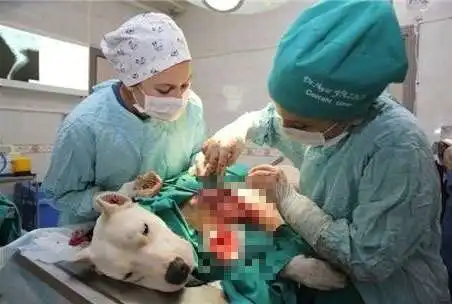Extremity (Limb) Amputation In Cats-Dogs The Purpose of the Operation
Limb amputations are performed when the front or hind legs are damaged due to various reasons and where treatment is not possible.
Amputation of limb losing its function because of bein
g severely injured or necrosis of tissues as a result of injuries occurring in legs due to frequently encountered reasons in dogs and cats such as traffic accidents, stuck in door, crushing and so on is the only method to be applied for the patient to regain his health.
In addition, limb amputation can also be made compulsorily in the patients with decubitus wounds and pressure necrosis due to continuous frictions arising from the loss of function in the legs in the paralyzed patients with injured spine.
Points to Take into Account Before the Operation
The operation should be done urgently in case of injury or gangrene on the legs due to injuries.
If there is no urgency for the operation; general health examinations of the patient should be performed before the operation. This is important in order not to risk the life of the patient who will be anesthetized.
If the patient has a drug allergy, this should be shared with the veterinary physician.
No food should be given to the patient within 12-24 hours before the operation. This approach will allow the patient who will be anesthetized to undergo a more comfortable operation.
Technique of the Operation
Sterilization processes are performed at the preparation room for the patient to whom a sedative is administered for the operation. For this purpose, first of all the hairs in the operation area are shaved. Then, the area is disinfected locally with an antiseptic solution. After these procedures, the anesthesia preferred by the veterinary physician is applied to the patient in the operation room. The area is limited with a sterile cover and is made ready for the surgical intervention.
The region to be selected for the operation should be the joint that connects to the leg to the body. In other words, the shoulder joint in the front leg and hip joint or knee joint in the hind leg should be selected as the operation area for amputation. After the necessary precautions to prevent hemorrhage are taken and the ligation is provided, the joint is cut with all the layers and the necrosis part of the limb is removed from the body. Then, a skin suturing is applied and the injured area is closed and the operation is completed.
Points to Take into Account After the Operation
Antibiotic administration after the operation should be of the duration and dose recommended by the veterinary physician.
It should be remembered that the patient may harm the operation area by licking and biting. WinPet MedVest should be absolutely used.
It is important to shape WinPet MedVest according to the patient. In the patient using WinPet MedVest, the part corresponding to the amputated leg cavity should be closed by suturing. In this case, the operation area does not need to be bandaged separately.
If WinPet MedVest will not be used for the patient, the area should be protected with a bandage after the operation. Otherwise, frictions during sitting can cause irritation or edema and also complications may occur such as opening of the sutures.
Analgesics may be given to the patient when necessary.
Complete recovery is completed within about 10-12 days and then, sutures can be removed.
In this period, if a condition such as swelling, redness, inflammation, develops in the area caused by an edema, the veterinary physician should be consulted without delay.
Possible Complications After the Operation
Complications are scarcely any provided that sterilization is adapted and suitable materials are used during the operation and regular antibiotic administration is considered after the operation.
However, sutures should be protected after the operation. WinPet MedVest should not be removed from the patient throughout the recovery period. Otherwise, it should be kept in mind that there is a risk of opening the sutures in the operation area by biting or rubbing them on the surface.
If you want to read our other articles, click on them.


 You can follow our
You can follow our